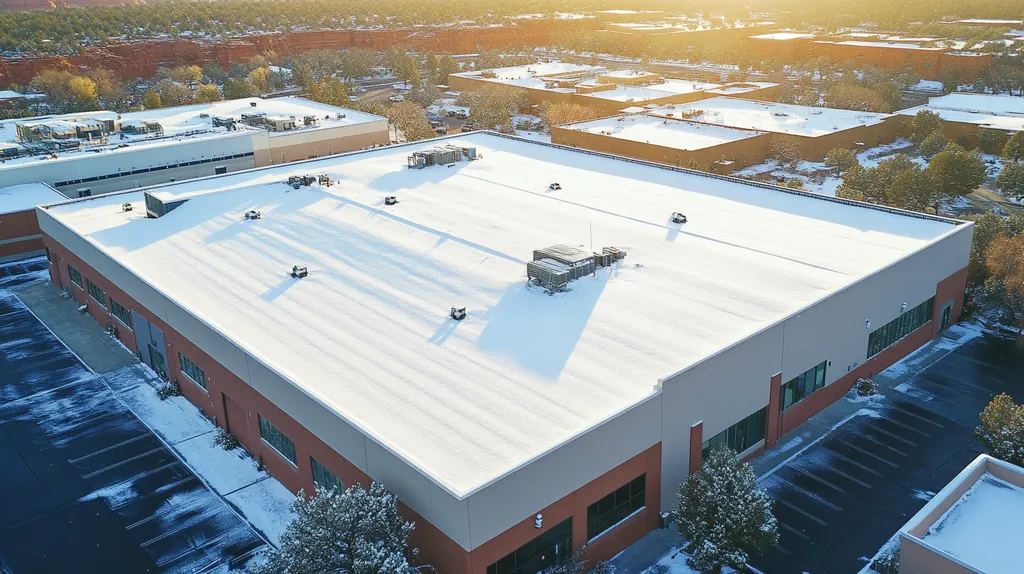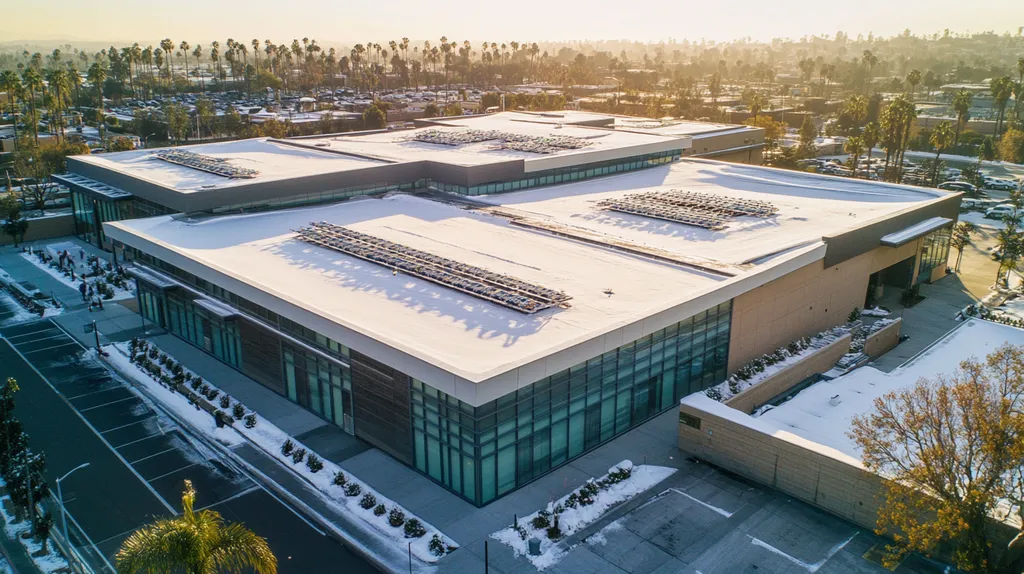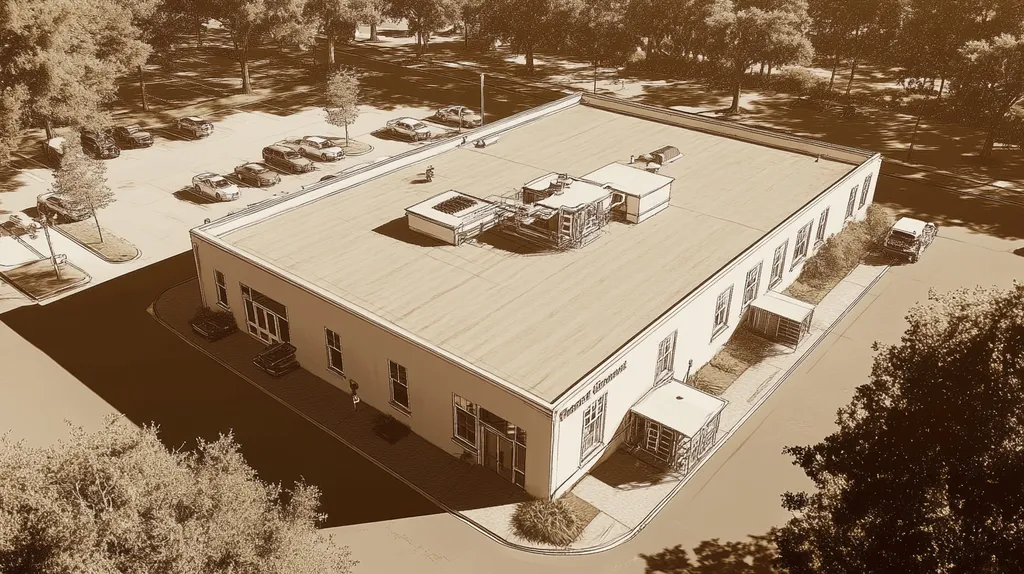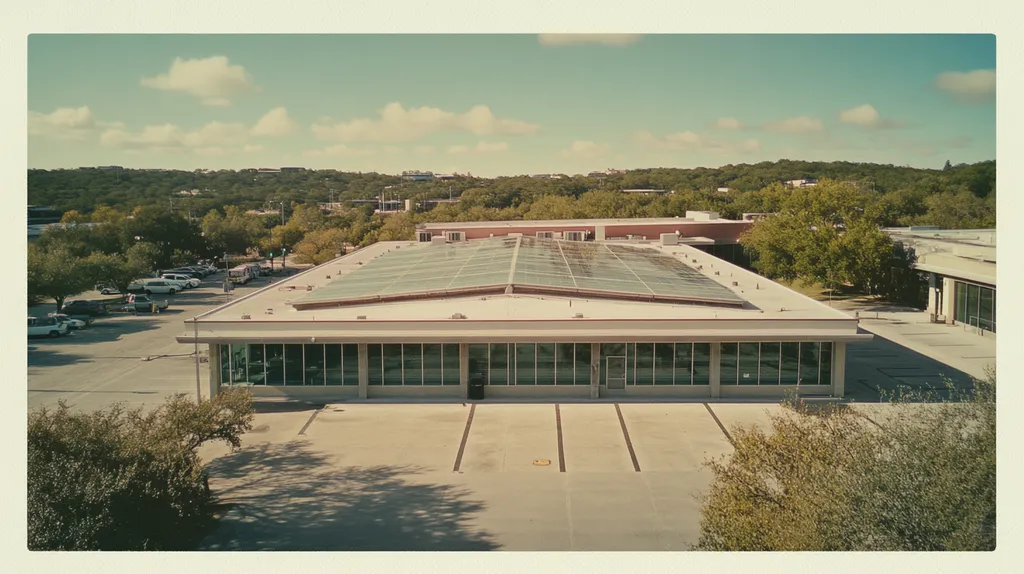Welcome to today’s Battle Royale featuring two roofing heavyweights: “Pressure Washing” in the east corner versus “Soft Washing” in the west!
Tonight’s showdown pits these contenders against each other across six punishing rounds designed to test every aspect of their performance for Commercial Roof Cleaning.
At stake? Millions in potential costs, decades of building protection, and the critical performance demands of modern commercial and industrial facilities.
Our professional judging panel will evaluate each round on technical merit, real-world performance, and value delivery. After all six rounds, we’ll declare our ultimate champion.
Ladies and gentlemen, facility managers and building owners… it’s time to rumble!
ROUND 1: INITIAL COSTS & INSTALLATION
The choice between pressure washing and soft washing systems can significantly impact a commercial property’s maintenance budget and operational efficiency. With roofing expenses representing up to 60% of building exterior maintenance costs, selecting the right cleaning method becomes crucial for protecting this vital asset while managing resources effectively.
Material Expenses
Initial equipment investments vary dramatically between these two cleaning approaches. Pressure washing systems require substantial upfront costs for industrial-grade pumps, specialized nozzles, and safety equipment, often ranging from $3,000 to $8,000 for commercial-grade units.
Soft washing systems typically cost 30-40% less than pressure washing equipment. Their lower-pressure design requires less robust components and simpler delivery systems, though they do need specific chemical solutions designed for gentle cleaning.
The specialized cleaning solutions for soft washing, while an ongoing expense, generally cost less annually than maintaining and replacing pressure washing equipment components. Additionally, soft washing solutions often provide longer-lasting results, requiring fewer cleaning cycles per year.
Regarding material expenses, pressure washing earns the “ADVANTAGE” due to lower recurring chemical costs and simpler supply needs.
Installation Complexity
Pressure washing requires precise machine pressure adjustments to avoid damaging fragile roofing materials. Operators must carefully select appropriate nozzle attachments and maintain proper distance from the roof surface to prevent damage. (source: Window Cleaning Miami)
Soft washing systems feature simpler setup procedures and fewer critical adjustment points. Their lower pressure nature inherently reduces the risk of material damage, requiring less technical expertise for proper deployment.
Training requirements differ significantly between methods. Pressure washing operators need extensive training in equipment operation, safety protocols, and surface-specific techniques, while soft washing requires primarily chemical handling training.
Due to its more straightforward setup and reduced training requirements, soft washing claims the “ADVANTAGE” in installation complexity.
Project Timeline
Project duration significantly impacts facility operations and maintenance scheduling. Pressure washing projects typically require extensive preparation time for equipment setup, safety measures, and surface testing.
The actual cleaning process with pressure washing proceeds more slowly due to the need for careful application and multiple passes to avoid damage. Each section requires precise attention to pressure settings and nozzle angles.
Soft washing applications generally complete faster due to broader coverage areas and fewer technical adjustments. The chemical action does most of the work, allowing for more efficient coverage of large roof sections.
In timeline efficiency, soft washing takes the “ADVANTAGE” with its faster application process and reduced setup requirements.
ROUND 1 WINNER: SOFT WASHING
ROUND 2: DURABILITY & LIFESPAN
The durability implications of roof cleaning methods represent a critical decision point for property owners, with potential impacts lasting decades. Modern commercial roofs represent investments often exceeding $500,000, making their preservation essential for business continuity and asset protection. Selecting an appropriate cleaning method can mean the difference between a roof lasting its full intended lifespan or requiring premature replacement.
Surface Impact Assessment
High-pressure washing systems generate forces exceeding 2,000 PSI, creating significant stress on roofing materials. This intense pressure can dislodge protective granules, compromise membrane integrity, and accelerate wear patterns across the roof surface.
The forceful nature of pressure washing poses particular risks to aging roofs or those with existing vulnerabilities. Even minor existing damage can be exacerbated by high-pressure applications, potentially creating new entry points for moisture.
Soft washing operates at pressures below 100 PSI, dramatically reducing mechanical stress on roofing materials. This gentle approach preserves protective coatings and maintains surface integrity while still achieving thorough cleaning results.
For surface impact considerations, soft washing claims the clear ADVANTAGE by minimizing physical stress on roofing materials.
Material Compatibility
Pressure washing systems present varying degrees of risk across different roofing materials. Single-ply membranes can suffer from pressure-induced stretching, while built-up roofing may experience displacement of aggregate layers.
The concentrated force of pressure washing can compromise seams and flashings, particularly in areas where different materials meet. These critical junctions often require extra attention and reduced pressure, complicating the cleaning process.
Soft washing solutions are formulated to be compatible with most commercial roofing materials. The chemical cleaning agents work effectively without compromising material integrity or affecting adhesion at seams and transitions.
In terms of material compatibility, soft washing earns the ADVANTAGE through its universal applicability and reduced risk profile.
Long-term Performance
Regular pressure washing can accelerate the aging process of roofing materials through cumulative mechanical stress. Each cleaning session potentially removes a small amount of protective material, gradually diminishing the roof’s weather resistance.
The aggressive nature of pressure washing may create micro-abrasions that become visible only after multiple cleaning cycles. These seemingly minor damages can develop into significant issues over time, particularly in harsh weather conditions.
Soft washing’s gentle approach helps maintain the roof’s protective characteristics over multiple cleaning cycles. The cleaning solutions continue working after application, providing ongoing protection against organic growth and contamination.
For long-term performance preservation, soft washing secures another ADVANTAGE through its sustainable cleaning approach.
ROUND 2 WINNER: Soft Washing
ROUND 3: PERFORMANCE FACTORS
Performance factors in commercial roof cleaning directly impact both immediate maintenance costs and long-term building protection. With proper cleaning potentially extending roof life by 25% while reducing energy costs up to 15%, choosing the right method becomes a critical business decision. Understanding how each approach performs across key metrics helps facility managers optimize their maintenance investment.
Cleaning Effectiveness
The primary goal of any roof cleaning system is to thoroughly remove contaminants that can damage roofing materials and reduce energy efficiency. Different types of debris and biological growth require specific approaches for optimal removal.
Pressure washing excels at removing surface debris and stubborn stains through mechanical force. However, this aggressive approach may not effectively address underlying biological growth or chemical contamination that can resurface quickly.
Soft washing systems combine gentle pressure with specialized cleaning solutions that penetrate and eliminate contaminants at their source. The chemical formulations continue working after application, providing longer-lasting results and better prevention of regrowth.
For overall cleaning effectiveness, soft washing claims the ADVANTAGE through its comprehensive and lasting approach to contamination removal.
Coverage and Accessibility
Proper cleaning requires consistent coverage across all roof surfaces, including hard-to-reach areas and complex architectural features. Equipment versatility and application methods significantly impact cleaning thoroughness.
Pressure washing equipment can be cumbersome in tight spaces and around rooftop equipment. The concentrated spray pattern requires multiple passes to ensure complete coverage, potentially missing areas where direct spray cannot reach.
Soft washing systems utilize specialized sprayers that provide broader, more even coverage with less effort. Pump-up sprayers offer excellent maneuverability and consistent application across various roof configurations. (source: Cleaner Today)
In terms of coverage and accessibility, soft washing earns the ADVANTAGE through superior application versatility and consistent coverage.
Operational Efficiency
The efficiency of cleaning operations directly affects facility downtime and resource utilization. Smart equipment choices can significantly reduce labor costs while improving cleaning results.
Pressure washing requires careful attention to technique and constant monitoring of pressure settings. This focused approach demands more operator time and increases the risk of inconsistent results across large roof areas.
Soft washing systems allow for more efficient application with less technical manipulation. The simpler operation reduces worker fatigue and enables more consistent results across longer cleaning sessions.
For operational efficiency, pressure washing and soft washing achieve a TIE, as each offers distinct advantages depending on specific project requirements.
ROUND 3 WINNER: SOFT WASHING
ROUND 4: MAINTENANCE REQUIREMENTS
Maintaining commercial roofing systems represents a critical operational challenge, with poor maintenance decisions potentially leading to premature roof failure and excessive repair costs. Studies indicate that improper maintenance can reduce a roof’s lifespan by up to 30% while increasing annual operating expenses by 25%. Understanding the maintenance implications of different cleaning methods helps facility managers optimize their roof care strategies and protect their building investments.
Equipment Care Requirements
Pressure washing equipment demands rigorous maintenance schedules to ensure safe and effective operation. Components like pumps, hoses, and nozzles require regular inspection and frequent replacement due to wear from high-pressure operation.
The complex nature of pressure washing systems means more potential failure points and higher maintenance costs. Regular calibration and testing are essential to maintain proper pressure levels and prevent accidental damage to roofing materials.
Soft washing equipment features simpler components and lower operating pressures, resulting in reduced wear and maintenance needs. Low-pressure pumps and specialized nozzles operate with minimal stress, extending equipment life and reducing replacement frequency. (source: Horizon Home Detailing)
For equipment maintenance considerations, soft washing claims the ADVANTAGE through reduced complexity and lower maintenance demands.
Surface Treatment Frequency
Pressure washing typically requires more frequent cleaning cycles due to its purely mechanical cleaning action. Without ongoing protective benefits, surfaces become re-contaminated more quickly, necessitating additional cleaning sessions.
The aggressive nature of pressure washing can gradually strip protective coatings, requiring more frequent reapplication of sealants and protective treatments. This creates an ongoing cycle of cleaning and reprotection.
Soft washing solutions provide residual protection through their specialized chemical formulations. This extended protection helps prevent rapid recontamination and reduces the frequency of required cleaning cycles.
In treatment frequency requirements, soft washing earns the ADVANTAGE by extending the time between necessary cleanings.
Ongoing Monitoring Needs
Properties using pressure washing require vigilant monitoring for potential surface damage after each cleaning. The high-pressure application can create subtle damages that worsen over time if not identified early.
Regular inspections must focus on seams, flashings, and areas where different materials meet, as these locations are particularly vulnerable to pressure washing damage. This intensive monitoring adds to the overall maintenance burden.
Soft washing’s gentle approach reduces the need for post-cleaning damage inspections. The lower risk of mechanical damage allows for more standard inspection schedules focused on general roof condition rather than cleaning-related issues.
For ongoing monitoring requirements, soft washing secures the ADVANTAGE through reduced inspection needs and lower risk of cleaning-related damage.
ROUND 4 WINNER: SOFT WASHING
ROUND 5: SUSTAINABILITY CREDENTIALS
Environmental impact has become a critical factor in commercial roof maintenance decisions, with sustainable practices directly affecting both regulatory compliance and corporate ESG goals. Studies show that roof cleaning operations can account for up to 30% of a facility’s water consumption and potentially release harmful chemicals into the environment if not properly managed.
Impact on Ecosystems
The environmental consequences of roof cleaning extend far beyond the immediate building footprint. Traditional pressure washing methods often result in significant overspray and runoff, carrying debris and potential contaminants into surrounding landscapes and drainage systems.
Pressure washing’s high-velocity water streams can dislodge roofing materials and chemicals that end up in local waterways. This mechanical action also creates fine particulate matter that can become airborne, affecting air quality and nearby vegetation.
Soft washing systems utilize biodegradable cleaning solutions applied at low pressure, minimizing both runoff and overspray. The controlled application prevents the dispersal of harmful materials while effectively removing contaminants.
For ecosystem protection, soft washing claims the ADVANTAGE through its controlled application and environmentally conscious formulations.
Water Usage and Efficiency
Commercial roof cleaning represents a significant water consumption challenge. Pressure washing systems typically use 3-4 gallons per minute at full operation, with larger roofs requiring thousands of gallons for a single cleaning.
The high-pressure application often results in excessive water waste through overspray and bounce-back. This inefficiency not only wastes water but also increases the risk of interior water damage.
Soft washing equipment features specialized hose-end sprayers designed for efficient product application and minimal water waste. These systems provide precise control over solution distribution while dramatically reducing overall water consumption. (source: Cleaner Today)
Regarding water efficiency, soft washing secures the ADVANTAGE through superior application control and reduced consumption.
Long-term Environmental Impact
The cumulative environmental effects of regular roof cleaning extend throughout the building’s lifecycle. Pressure washing’s aggressive approach can accelerate material degradation, leading to more frequent replacement cycles and increased landfill waste.
The energy required to operate high-pressure systems contributes to higher carbon emissions. Additionally, the frequent replacement of damaged components creates an ongoing waste stream that impacts environmental sustainability.
Soft washing’s gentle approach extends material lifespan while using less energy. Its biodegradable solutions break down naturally, and the reduced cleaning frequency minimizes the overall environmental footprint of maintenance operations.
In long-term environmental impact, soft washing takes the ADVANTAGE through reduced material waste and lower energy consumption.
ROUND 5 WINNER: SOFT WASHING
ROUND 6: SPECIALIZED APPLICATIONS
Specialized applications in commercial roof cleaning demand precise methodology to protect critical infrastructure investments. Industry data shows that improper cleaning techniques contribute to 40% of premature roof failures, with repair costs often exceeding $100,000 for larger facilities. Understanding the specific capabilities and limitations of different cleaning methods helps facility managers protect their roofing assets while maintaining optimal performance.
Heavy Industrial Applications
Industrial environments present unique challenges for roof cleaning, with oil, chemical residues, and atmospheric pollutants creating stubborn contamination. These persistent contaminants can accelerate material degradation and compromise roof integrity if not properly addressed.
Pressure washing offers superior mechanical removal of industrial contaminants through concentrated force. The high-pressure stream effectively strips away accumulated residues and penetrates deep into surface pores.
Soft washing systems, while gentler, may struggle to remove heavy industrial deposits without multiple applications. The chemical solutions require longer dwell times and may not fully address deeply embedded contaminants.
For heavy industrial applications, pressure washing claims the ADVANTAGE through superior mechanical cleaning power.
Temperature-Sensitive Materials
Modern commercial roofs often incorporate temperature-sensitive materials like TPO or PVC membranes. These materials can become brittle or deformed when exposed to extreme pressure or aggressive cleaning methods.
Pressure washing poses significant risks to temperature-sensitive materials, as the mechanical force can create friction and localized heating. This thermal stress can compromise material integrity and accelerate aging.
Soft washing systems maintain consistent material temperatures through gentle application and specialized solutions. The low-pressure delivery prevents thermal stress while effectively removing surface contaminants.
For temperature-sensitive applications, soft washing earns the ADVANTAGE through reduced thermal impact.
Multi-Surface Compatibility
Commercial roofs often combine multiple materials and surface types, from membrane sections to metal flashings. Each surface requires specific cleaning considerations to prevent damage while ensuring thorough maintenance.
Pressure washing requires constant adjustment of pressure settings and nozzle patterns when transitioning between surfaces. This complexity increases the risk of accidental damage and extends project timelines.
Soft washing provides consistent cleaning action across varied surfaces through calibrated chemical solutions. The gentle application method works effectively on multiple materials without requiring significant technique adjustments.
For multi-surface applications, soft washing takes the ADVANTAGE through superior versatility.
ROUND 6 WINNER: Soft Washing
AND THE WINNER IS…
After six grueling rounds of technical evaluation, we have our verdict…
In a decisive victory, taking 5 out of 6 rounds, SOFT WASHING emerges as our undisputed commercial roof cleaning champion!
This technical knockout came through dominant performances in durability, maintenance requirements, and sustainability credentials. Soft washing’s gentle yet effective approach proved superior in protecting long-term roof integrity while delivering exceptional cleaning results.
However, don’t count pressure washing out completely! This powerful contender still reigns supreme in heavy industrial applications where maximum mechanical cleaning force is required. When facing stubborn industrial contamination or deeply embedded debris, pressure washing’s raw power can deliver knockout results.
IMPORTANT NOTICE: While this analysis reflects general industry findings, every commercial property faces unique challenges. Local climate conditions, roofing materials, and specific contamination issues can all impact cleaning method effectiveness. Building owners and facility managers should always consult qualified roofing professionals who can evaluate their specific situation and recommend appropriate solutions.
Ladies and gentlemen, in the high-stakes arena of commercial roof maintenance, victory goes not to the strongest contender, but to the solution that best matches your building’s unique requirements. Choose wisely – your roof’s future depends on it!
FREQUENTLY ASKED QUESTIONS
Q. What are the initial costs of cleaning a commercial roof?
A. The costs for cleaning a commercial roof vary significantly between pressure washing and soft washing. Pressure washing systems typically require a larger initial investment of $3,000 to $8,000, while soft washing systems are generally 30-40% less expensive. Additionally, while soft washing incurs ongoing costs for cleaning solutions, those costs are often lower than those of pressure washing equipment maintenance.
Q. How does commercial roof cleaning impact the roof’s lifespan?
A. The method used for cleaning can significantly affect a roof’s longevity. Aggressive methods like pressure washing may cause material degradation, potentially reducing lifespan by up to 40%. In contrast, gentle soft washing preserves the integrity of the roofing materials, allowing them to last longer under normal wear and tear.
Q. Which cleaning method is more effective for commercial roofs?
A. While pressure washing is effective at removing surface debris, it may not adequately handle biological growth. Soft washing, on the other hand, utilizes specialized solutions that penetrate contaminants and provide longer-lasting results. Therefore, for overall effectiveness, soft washing is generally the preferred method.
Q. What are the maintenance requirements for commercial roof cleaning?
A. Maintenance needs differ significantly between pressure washing and soft washing. Pressure washing requires regular inspections and replacement of various components due to high wear. In contrast, soft washing, with its simpler system, demands less frequent maintenance, making it easier and more cost-effective for property managers.
Q. How do commercial roof cleaning methods impact water usage?
A. Roof cleaning can consume a large amount of water. Pressure washing typically uses 3-4 gallons per minute, leading to significant waste. Soft washing, however, applies solutions more efficiently, dramatically reducing water consumption while still achieving excellent cleaning results, making it a more sustainable choice.
Q. Are there special applications for roof cleaning in industrial settings?
A. Yes, heavy industrial applications often require tough cleaning techniques to remove stubborn contaminants. Pressure washing provides powerful mechanical removal suitable for intense residue. However, care must be taken to protect roofing materials, as gentler soft washing may not suffice for all industrial contaminants.
Q. How does cleaning affect the environment?
A. Environmental impact is a crucial factor in roof cleaning. Pressure washing can cause runoff that carries harmful chemicals into local ecosystems. In contrast, soft washing employs biodegradable solutions and minimizes runoff and overspray, making it a more environmentally friendly option that protects local water sources.











